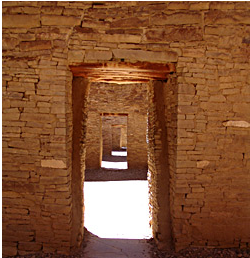Publication Date
7-1-2015
Abstract
This dissertation details the results obtained from investigations conducted at an Aguas Buenas (300 BC-AD 800) to early Chiriquí phase (AD 900-1550) site known as El Cholo (SJ-59ECh), a mound complex located in the Upper General Valley of southern Costa Rica. Using data from surface collection along with horizontal and stratigraphic excavations, this investigation analyzed site formation and associated behavioral processes underlying the construction of a set of interconnected mounds comprising the architectural core of El Cholo. Previous research suggested that mounded sites in the Upper General area were likely seats of emergent elites with monumental constructions occupying a central position within a two-tiered settlement hierarchy. I therefore set out to identify patterns that would support or falsify this assertion, additionally proposing alternative hypotheses utilizing social models involving corporate/network dynamics and heterarchical, practice-based social processes. Evidence suggests that the mounds at El Cholo, as opposed to being residential spaces, were rather likely accretional mortuary structures, with successive funerary behavior consisting of a ceremonial mixture of interment, fire ritual and deposition of fragmented ceramic and lithic artifacts. This pattern, identified throughout the site and at different times, yielded a multi-stage occupational profile. Radiometric data suggests that activity ranged from as early as the 2nd century AD to as late as the 11th century AD. The modest nature of offerings and the diffuse and relatively uniform nature of mortuary ritual and attendant ceremonial material have implications for previous assumptions of hierarchy in the mid to late Formative in the Upper General Valley, supporting the likelihood that El Cholo may have been a manifestation of collective, corporate, heterarchically based groups rather than the result of centralized managerial processes. As such, this study re-evaluates the prevailing thinking regarding sociocultural change in the Upper General Valley with implications for the Diquís subregion, as well as its encompassing area of Greater Chiriquí. It suggests there may be a greater level of social variability in the Isthmo Colombian Area even though regions may be in close proximity to each other and despite the large-scale uniformity of an apparent long-term mid-range social stability. It thus holds implications for how we view interregional interaction and social complexity in general, especially as to how these social dynamics articulate within heterogeneous or homogeneous social landscapes.
Keywords
Archaeology, Costa Rica, Greater Chiriquí, Diquís, Isthmo Colombian Area, Central America, Social Complexity
Project Sponsors
National Science Foundation, University of New Mexico Latin American and Iberian Institute, Office of Graduate Studies and Graduate and Professional Student Association
Document Type
Dissertation
Language
English
Degree Name
Anthropology
Level of Degree
Doctoral
Department Name
Anthropology
First Committee Member (Chair)
James L. Boone
Second Committee Member
Garth Bawden
Third Committee Member
Louis Scuderi
Fourth Committee Member
John Hoopes
Recommended Citation
Herrera, Roberto Alexander. "Social and Ritual Dynamics at el Cholo: An Upper General Valley Funerary Village of the Diquís Subregion, Southern Costa Rica." (2015). https://digitalrepository.unm.edu/anth_etds/30

